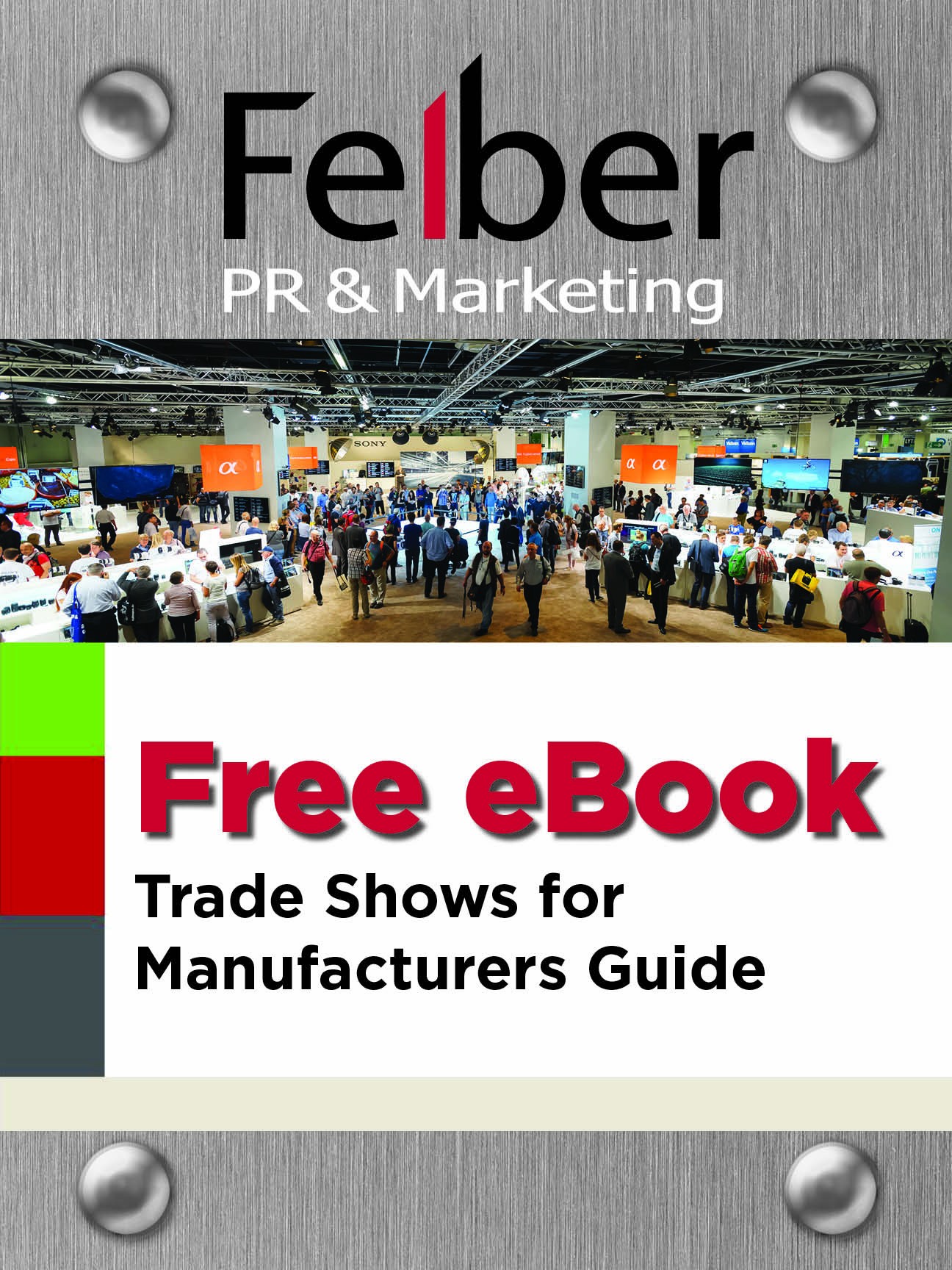Trade Show Preparation 101 for Manufacturers
How planning produces results and return on investment
Trade shows and industry conferences provide manufacturers with a platform to show prospects, customers, and industry media their entire line of products and services n a short amount of time. It is important as manufacturers to utilize this opportunity and use it to their advantage. Preparation, like most worthwhile endeavors, is key to increasing profitability and productivity during a trade show. At Felber PR & Marketing, we have years of trade show execution and experience. We’ve compiled the top 5 do’s for ultimate trade show success.
Choose the Right People to Work the Trade Show
Managing your company’s booth is a full-time, non-stop job. It is essential that your booth is never left unattended so bring at least 2 people to a trade show. Make sure whoever you assign to represent your brand at the trade show is outgoing and friendly. A smile can make a world of a difference and get people to come to your booth and ask questions.
Post Consistent Social Media Before and During the Trade Show
Take advantage of social media to boost your company awareness. Post “teaser” videos and photos before the trade show to let people know that you are attending. This will not only create awareness but also help get people interested in your products. During the show, use the event’s hashtag, as well as popular trending hashtags ,to gain more exposure. Need a primer on Hashtags? Click here. Also, this may seem self-explanatory but don’t forget to put your booth number in your posts! People need to be able to locate your booth.
Maintaining a Presence Both Online and Offline
It seems that every year, more and more trade shows in specific industry niches are back-to-back or during the same week. Because of this, some of your target audience may not be able to attend the trade show you’re in which you are exhibiting. It is crucial to create a social media presence that makes those who cannot attend the trade show feel like they are physically there because some of your target audience may be unable to come due to scheduling conflicts. Content from the show, such as pictures, videos, product demo videos, and slideshows should be made visible on social media or your company’s blog. If possible, take pictures with those who visit your booth, especially if they are media that cover your niche audience. Then post the pictures using the event’s hashtag, the person in the picture’s Twitter handle and an industry hashtag or two if you have room, to gain the utmost exposure possible.
Create a Visually Appealing Booth
The more visually appealing your booth is, the more attention and traffic you’ll get. It’s as simple as that. Your products should always be the focal point of your booth, so put them at the front at make sure they stand out. Utilize lighting and keep in mind the appropriate colors to showcase your products in the best way possible. If your company has received media coverage, show it off at your booth. This will allow for prospects and other media to see what you’ve accomplished and get a better understanding of your position in the industry. You can even offer reprints of prominent articles and case studies as show handouts. Consider technical or “white papers” as handouts as well to qualified prospects.
Post Event Follow Ups are Crucial
Trade show follow up is just as important as the actual execution of the trade show. Keep track of all business cards you’ve gotten and connect with these individuals on LinkedIn and Twitter. Just like any pre-show promotion to drive traffic, having a memory invoking reminder of their visit will separate your company for all those who never bother to follow up at all.
Consider repairing templates ahead of time for thank you messages to those you spoke with you. This will save you a lot of time in the long run. Use the template and add a personal touch to each message about what you spoke about to the individual you are writing. This will help for you to spark additional conversations with your target audience.
Trades shows can be very overwhelming but with proper short-term and long-term planning, you can see major results.

These steps are easy to incorporate and allow you to manage prospects easier and sell you products with confidence because you are prepared.
If you would like to find out more about creating a trade show social media plan and optimizing your time a trade show, contact Rob Felber at Robfelber@felberpr.com or (330) 963-3664

